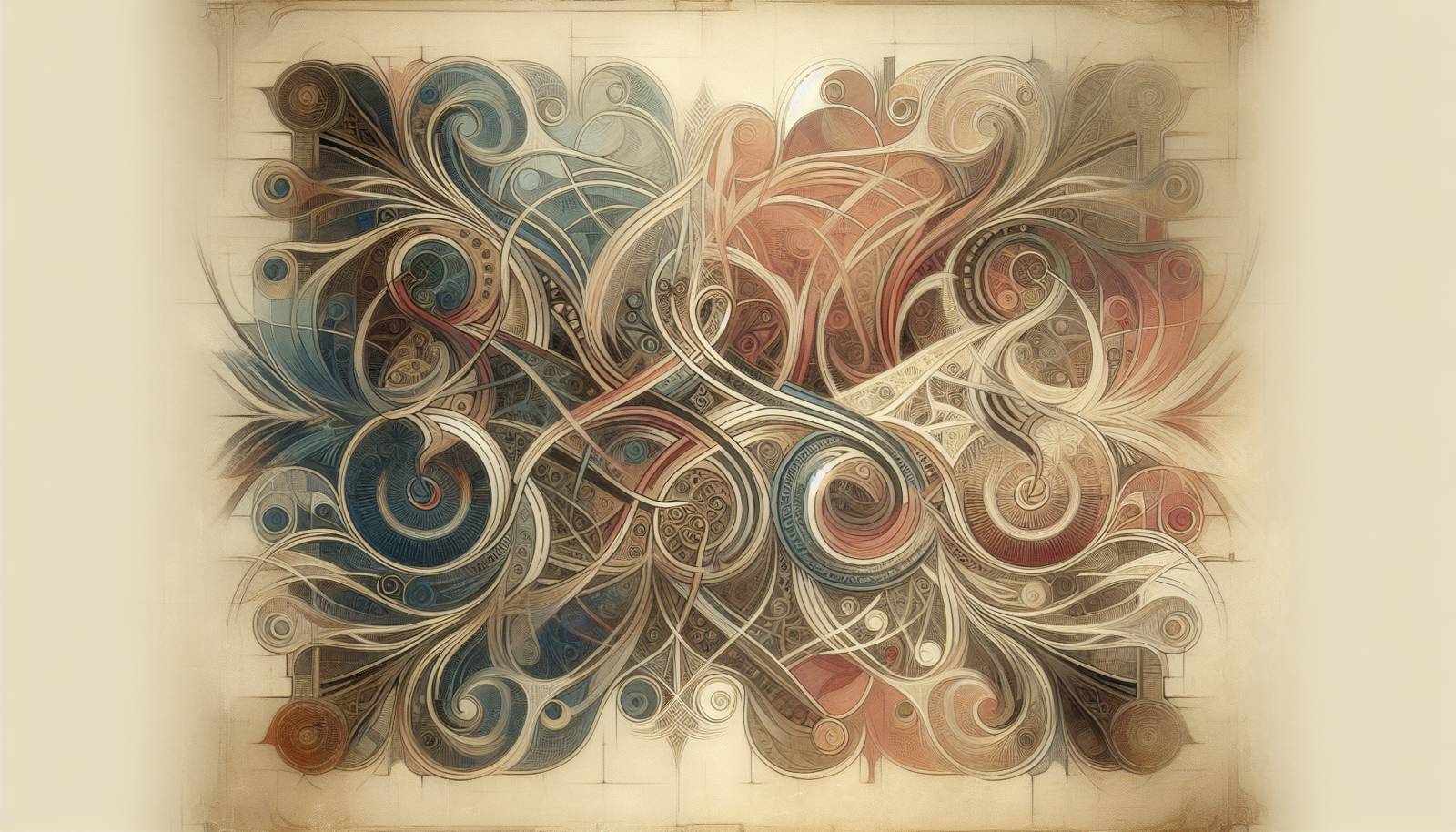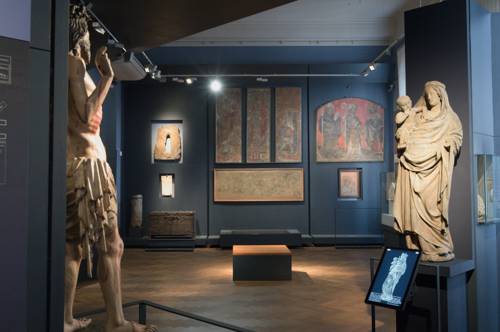
FAQ About The Influence of Medieval Art on Modern Fantasy

How has medieval art influenced modern fantasy literature?
Medieval art has significantly influenced modern fantasy literature by providing a rich tapestry of imagery and themes from which authors can draw. Elements such as knights, dragons, enchanted forests, and mystical creatures find their roots in medieval iconography. The world-building often mirrors the hierarchical societies portrayed in medieval artworks, providing a familiar structure for readers. Authors like J.R.R. Tolkien and George R.R. Martin have explicitly cited medieval aesthetics as foundational to their work, creating worlds that closely resemble the medieval period in their setting and cultural details.

What aspects of medieval art are most commonly used in modern fantasy media?
In modern fantasy media, elements like heraldry, religious iconography, and mythical creatures often stem from medieval art traditions. Architectural inspirations include castles and cathedrals, frequently serving as the backdrop for fantasy stories. Tapestries and stained glass windows provide insights into the clothing, weaponry, and hierarchies that are often depicted in these fantasy worlds. The symbolism and narrative styles from medieval art also play a significant role in establishing the tone and visual style of contemporary fantasy media.

Why do fantasy creators often turn to medieval times for inspiration?
Fantasy creators often turn to medieval times for inspiration because the period offers a well-documented era rich in myths, legends, and visual storytelling. This epoch provides a historical framework that feels both familiar and enchanted, allowing creators to construct immersive worlds that are easily relatable yet fantastical. The archetypes present in medieval narratives, such as the hero's journey and the battle between good and evil, continue to resonate strongly with modern audiences.

Can you name some modern fantasy works heavily influenced by medieval art?
Many modern fantasy works are heavily influenced by medieval art, with notable examples including The Lord of the Rings by J.R.R. Tolkien, which features landscapes and iconography akin to medieval European settings. George R.R. Martin's A Song of Ice and Fire series exemplifies the use of medieval-inspired themes and visuals, reflected in both the books and the Game of Thrones television adaptation. Additionally, fantasy films like Excalibur and video games such as The Witcher series draw heavily from medieval aesthetics.

What role do mythical creatures in medieval art play in fantasy literature?
Mythical creatures depicted in medieval art often serve as the template for similar beings in fantasy literature. Creatures like dragons, griffins, and unicorns, frequently illustrated in medieval manuscripts and bestiaries, are extensively used in fantasy settings. These mythological beings enrich the narrative by imbuing the story with elements of wonder and adventure, challenging characters to confront the unknown and often reflecting thematic elements such as power, magic, and mystery inherent in the genre.

How have medieval themes of chivalry and heroism influenced modern fantasy?
Medieval themes of chivalry and heroism have a profound impact on modern fantasy as they offer compelling narrative frameworks centered around moral codes, valor, and the hero's quest. These themes are often portrayed through characters who embody the ideals of the medieval knight, engaging in quests or battling evil forces. Such themes provide an aspirational model, highlighting virtues like courage, honor, and loyalty, which are universally appreciated and transferrable to contemporary fantasy tales.

Are there any notable fantasy artists inspired by medieval art?
Yes, several contemporary fantasy artists draw inspiration from medieval art. Artists like Alan Lee and John Howe, known for their work on The Lord of the Rings film series, have been influenced by medieval manuscripts and illuminated texts. Their art reflects detailed medieval architecture and motifs. Similarly, illustrators such as Pauline Baynes, who worked on C.S. Lewis's Narnia series, often incorporate medieval elements into their designs, bridging the historical with the mythical.

What is the significance of medieval architecture in fantasy world-building?
Medieval architecture plays a crucial role in fantasy world-building by providing structural and aesthetic elements that define the atmosphere of fantasy settings. Castles, fortresses, and cathedrals are emblematic of fantasy worlds, serving both as grandiose settings for epic narratives and symbols of power and mystery. The architectural style reflects the social and political dynamics of the worlds depicted, influencing everything from the layout of a kingdom to the strategic elements of a storyline.

How do medieval illuminated manuscripts influence modern fantasy storytelling?
Medieval illuminated manuscripts influence modern fantasy storytelling through their intricate depictions of fantastical worlds, richly detailed with borders, initial letters, and vibrant illustrations. These manuscripts offer a glimpse into the medieval imagination, showcasing mythical creatures, sacred stories, and historical events that can be integrated into fantasy plots. The visual style of illuminated manuscripts often inspires the graphical elements of fantasy books and games, contributing to a unique aesthetic that enhances the storytelling experience.

What are some common misconceptions about medieval influences in fantasy?
A common misconception about medieval influences in fantasy is that these works aim to historically recreate the Middle Ages. In truth, fantasy often uses the medieval period as a broad template to incorporate elements of mythology, folklore, and imagination. This mixing of fantasy and medieval realism is intended to evoke a certain atmosphere and thematic richness rather than pinpoint historical accuracy. Another misconception is that medieval-inspired fantasy is solely Western; in fact, many works integrate diverse cultural influences, including non-Western medieval elements.

How does medieval religious iconography impact fantasy narratives?
Medieval religious iconography impacts fantasy narratives by providing motifs and symbols that enrich the lore and depth of fantasy worlds. Symbols such as the cross, halos, and angels often manifest within these stories, either directly or through analogous constructs such as magical symbols and divine beings. These elements can influence the moral and ethical themes of a narrative, allowing for complex explorations of faith, power, and divinity within a fictional context.

In what ways do medieval art motifs appear in fantasy video games?
Medieval art motifs appear in fantasy video games through the design of characters, creatures, and environments that echo European medieval aesthetics. Games like The Witcher and Dragon Age showcase art styles influenced by medieval manuscripts and frescoes, seen in their use of intricate armor designs, mythical creature depictions, and historically inspired architecture. These games often utilize storytelling techniques rooted in medieval traditions, immersing players in a world that feels both ancient and magical.

Why is medieval heraldry prevalent in fantasy settings?
Medieval heraldry is prevalent in fantasy settings because it provides a visual shorthand for identifying characters, families, and alliances. Heraldry, with its intricate symbols and colors, is used to convey lineage, power, and allegiance within a story. This tradition translates well into fantasy, where the visual representation of these elements can symbolize deeper narrative themes of honor, legacy, and power struggles. The use of heraldry adds a layer of authenticity and richness to fantasy cultures.

Are medieval folktales and legends reflected in modern fantasy stories?
Yes, medieval folktales and legends are often reflected in modern fantasy stories. These tales provide narrative structures and archetypes that define the genre, such as the hero's journey, the quest for a holy grail, or encounters with mythical beings. Fantastical elements from medieval legends, like King Arthur's legends or Norse mythology, are reimagined and incorporated into contemporary fantasy, enriching the genre with timeless themes and motifs that resonate with today's audiences.

How do modern fantasy creators research medieval art for inspiration?
Modern fantasy creators often research medieval art for inspiration by studying historical documents, visiting museums, and exploring collections of medieval manuscripts and artifacts. They may delve into the works of historians and scholars to understand the social structures, cultural practices, and visual arts of the medieval period. Online resources and digital archives also provide access to medieval art and texts, allowing creators to incorporate authentic medieval elements into their fantasy narratives.

What is the relationship between medieval manuscripts and fantasy maps?
The relationship between medieval manuscripts and fantasy maps lies in their shared emphasis on visual storytelling and symbolic representation. Medieval manuscripts often contain maps and geographic illustrations that blend reality with mythology, a style that is mirrored in fantasy map-making. These maps serve as guides to the fictional worlds, helping readers visualize the journey and the landscape, much like medieval pilgrims or adventurers would have used maps for exploration.

How has medieval art inspired the costumes in fantasy films and series?
Medieval art has inspired costumes in fantasy films and series by providing a blueprint for the detailed designs and styles that define the look of a character or culture. Costumes often echo the clothing seen in medieval tapestries and frescoes, incorporating elements like chainmail, gowns, and hats typical of the era. This influence is evident in films like The Lord of the Rings and series like Game of Thrones, where costumes help establish the historical and mythical ambiance of the narrative.

Do modern fantasy themes sometimes reflect medieval societal issues?
Modern fantasy themes often reflect medieval societal issues, such as feudalism, class struggles, and religious conflicts, which can parallel contemporary social questions. These themes provide a lens through which creators can explore and critique current societal problems by using the medieval as a backdrop. The use of medieval settings allows for narratives that discuss power dynamics, governance systems, and ethical dilemmas, presenting complex worlds that mirror both historical and present-day challenges.

How do medieval bestiaries influence fantasy creature design?
Medieval bestiaries influence fantasy creature design by supplying a wealth of imaginative and bizarre animal depictions that inspire the creation of new mythical beings. These bestiaries, which combined natural history with myth, depicted creatures both real and fantastical. Modern fantasy taps into this source to create creatures that inhabit fantastical worlds, using the detailed descriptions and symbolic meanings of medieval bestiaries to imbue them with cultural and narrative significance.

What cultural impacts does medieval art have on international fantasy genres?
Medieval art's cultural impacts on international fantasy genres include the diffusion of European medieval imagery and themes, which have been adapted and integrated into a global context. Non-Western fantasy works often incorporate medieval elements, blending them with local myths and traditions to create unique hybrids. This cross-cultural exchange enriches the fantasy genre, allowing diverse narratives and visuals that resonate widely, illustrating how the medieval past can inform a multitude of global storytelling traditions.
